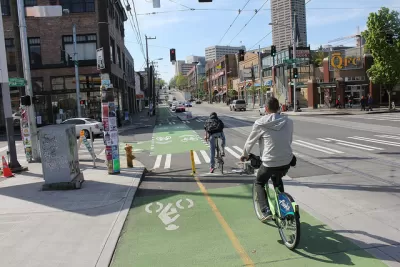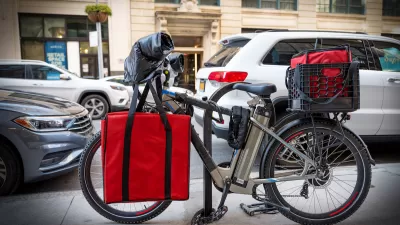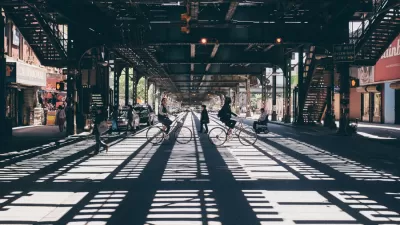As a growing number of devices fall outside of traditional vehicle classes, policymakers must decide how to classify and regulate high-speed e-bikes.

As e-bike manufacturers build increasingly fast and powerful "hyperbikes"—a term coined by Dutch builder VanMoof to describe its V model bike—policymakers must grapple with how to define and regulate the devices. As David Zipper writes,
Motorcycles and mopeds are often subject to an array of laws and restrictions that e-bikes aren’t, such as license plate mandates, helmet requirements, and special driver’s licenses. Such distinctions break down for the new class of high-speed e-bikes. After all, any two-wheeled vehicles traveling at 40 mph likely create comparable risk to the rider as well as other street users.
The e-bike market, which had been growing pre-pandemic, exploded during the last two years as people sought alternatives to public transit.
Regulations, meanwhile, have largely not kept up with the proliferation of new devices that blur the line between bicycles and the higher-powered class of mopeds and motorcycles. Federal rules in the U.S. classify e-bikes as having under 750 watts of power and top speed of 20 miles per hour, according to Zipper, but leave it up to states to regulate registration and insurance requirements.
For now, devices like the 700-watt, 37-mph VanMoof V largely fall outside of existing state and federal statutes. Advocates want to see clearer regulation, expressing concerns that leaving so many vehicles out of designated classes could lead to backlash and blanket bans on e-bikes, cargo bikes, and other forms of new mobility that, despite their usefulness, "don’t fit cleanly into the bike/car dichotomy," writes Zipper.
FULL STORY: As E-Bikes Speed Up, a Policy Dilemma Looms

Planetizen Federal Action Tracker
A weekly monitor of how Trump’s orders and actions are impacting planners and planning in America.

Chicago’s Ghost Rails
Just beneath the surface of the modern city lie the remnants of its expansive early 20th-century streetcar system.

San Antonio and Austin are Fusing Into one Massive Megaregion
The region spanning the two central Texas cities is growing fast, posing challenges for local infrastructure and water supplies.

Since Zion's Shuttles Went Electric “The Smog is Gone”
Visitors to Zion National Park can enjoy the canyon via the nation’s first fully electric park shuttle system.

Trump Distributing DOT Safety Funds at 1/10 Rate of Biden
Funds for Safe Streets and other transportation safety and equity programs are being held up by administrative reviews and conflicts with the Trump administration’s priorities.

German Cities Subsidize Taxis for Women Amid Wave of Violence
Free or low-cost taxi rides can help women navigate cities more safely, but critics say the programs don't address the root causes of violence against women.
Urban Design for Planners 1: Software Tools
This six-course series explores essential urban design concepts using open source software and equips planners with the tools they need to participate fully in the urban design process.
Planning for Universal Design
Learn the tools for implementing Universal Design in planning regulations.
planning NEXT
Appalachian Highlands Housing Partners
Mpact (founded as Rail~Volution)
City of Camden Redevelopment Agency
City of Astoria
City of Portland
City of Laramie





























